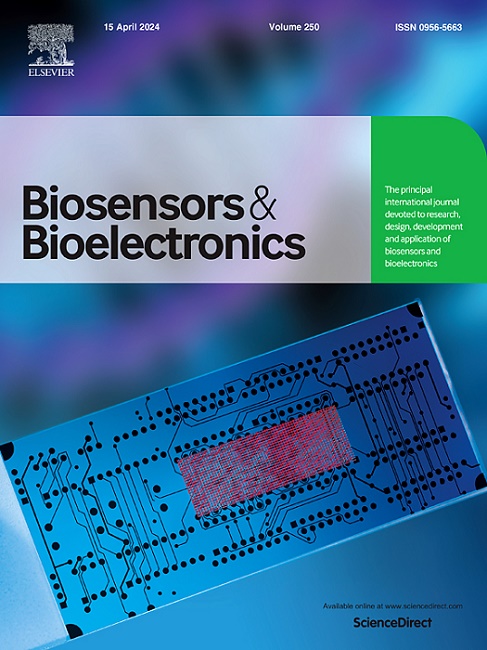电化学分子印迹聚合物传感器在病毒诊断:创新,挑战和案例研究
IF 10.5
1区 生物学
Q1 BIOPHYSICS
引用次数: 0
摘要
分子印迹聚合物(MIPs)是一种与抗体相当的合成材料,作为识别元件已广泛应用于电化学传感领域。与抗体、核酸和适体等传统识别元素相比,它们具有合成简单、生产成本更低、化学和物理稳定性更高以及在不同环境下性能更强的优势。改进的检测技术以及MIPs与金属纳米颗粒、碳纳米管、适配体、金属有机框架、量子点和电化学活性内部探针等材料的结合显示出越来越大的潜力。这些组合可能成为快速检测病毒的可靠方法,其性能与标准技术相似或更好。在这篇综述文章中,我们提供了详细的案例研究,涵盖了十种不同的病毒(豆荚斑驳病毒、登革热病毒、寨卡病毒、口蹄疫病毒、人乳头瘤病毒、丙型肝炎病毒、人类免疫缺陷病毒、甲型流感病毒、诺如病毒、严重急性呼吸综合征冠状病毒2)和四十多个具体的例子。本文综述了电化学mip传感器在病毒性疾病诊断中的最新进展,并对其性能进行了比较。此外,本文还讨论了MIPs作为有前途的识别元素所面临的挑战和未来的前景。本文章由计算机程序翻译,如有差异,请以英文原文为准。
Electrochemical molecularly imprinted polymer sensors in viral diagnostics: Innovations, challenges and case studies
Molecularly imprinted polymers (MIPs) are synthetic equivalent of antibodies and have been widely used in electrochemical sensing as recognition elements. They offer advantages over traditional recognition elements such as antibodies, nucleic acids and aptamers due to their simple synthesis, lower production costs, greater chemical and physical stability, and robust performance in diverse environments. Improved detection techniques and combining MIPs with materials like metal nanoparticles, carbon nanotubes, aptamers, metal organic frameworks, quantum dots, and electrochemically active internal probes show increasing potential. These combinations could become a reliable method for detecting viruses quickly, with performance similar or better than standard techniques. In this review article we provide detailed case studies covering ten different viruses (Bean pod mottle virus, Dengue virus, Zika virus, Foot-and-mouth disease virus, Human papillomavirus, Hepatitis C virus, Human immunodeficiency virus, Influenza A virus, Norovirus, Severe acute respiratory syndrome coronavirus 2) and over forty specific examples. We summarize the recent advances in the development of electrochemical MIP-based sensors for the diagnostics of viral diseases and compare their performance. Additionally, challenges and future perspectives of MIPs as promising recognition elements are discussed.
求助全文
通过发布文献求助,成功后即可免费获取论文全文。
去求助
来源期刊

Biosensors and Bioelectronics
工程技术-电化学
CiteScore
20.80
自引率
7.10%
发文量
1006
审稿时长
29 days
期刊介绍:
Biosensors & Bioelectronics, along with its open access companion journal Biosensors & Bioelectronics: X, is the leading international publication in the field of biosensors and bioelectronics. It covers research, design, development, and application of biosensors, which are analytical devices incorporating biological materials with physicochemical transducers. These devices, including sensors, DNA chips, electronic noses, and lab-on-a-chip, produce digital signals proportional to specific analytes. Examples include immunosensors and enzyme-based biosensors, applied in various fields such as medicine, environmental monitoring, and food industry. The journal also focuses on molecular and supramolecular structures for enhancing device performance.
 求助内容:
求助内容: 应助结果提醒方式:
应助结果提醒方式:


